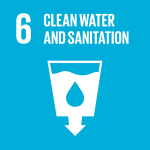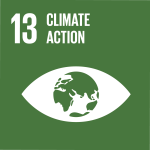Thursday, 21 October – The National Adaptation Plan Global Support Programme (NAP-GSP), implemented by UNEP and UNDP with funding from the Global Environment Facility and together with the Global Water Partnership (GWP) hosted a webinar exchange with over 60 participants about “Integrating Climate Risks in the Water Sector” with a focus on NAP formulation. Many countries address water as a distinct sector, but water is a cross-cutting issue. Water is a vulnerable sector that impacts other sectors, such as agriculture, livestock, health, and food security. Climate change is amplifying the existing stressors on water availability in all regions of the world from Zambia to Togo and Bolivia.
A review of the revised nationally determined contributions (NDCs) submitted by December 2020 to the UNFCCC shows that 39 countries included an adaptation component and 79 percent of these NDCs prioritized freshwater adaptation and identified water as a strong feature in other priority areas. Water was identified by Africa countries as both a key climate hazard and a main adaptation priority in their climate commitments.
The NAP-GSP has been supporting several Least Developed Countries (LDCs) this year including, Burundi, Sierra Leone, Chad, South Sudan, Central African Republic, and the Democratic Republic of Congo in formulating their initial NAPs and is working with 30 countries across the world to support their NAP process with Green Climate Fund (GCF) financing. “Through the GCF-funded NAPs, countries have been conducting vulnerability and risk assessments, which contribute to the NDC implementation taking place. The outputs from the NAP process feed into the UNDP Climate Promise that supports over 100 countries enhance their NDCs this past year,” said UNDP’s Lead Technical Advisor on NAPs, Ms. Rohini Kohli in her opening remarks.
Water in the NAP process - The case of Zambia
As NAPs become more sophisticated, the first step for any country is understanding the full scope of vulnerabilities to climate change with a risk assessment. A ‘climate risk’ is function of one or several hazards, such as a flood, the exposure of a system to these hazards and the vulnerability of the system. “When countries build their capacity to adapt to climate change, they reduce their vulnerability to climate change and can minimize the risk”, explained Mr. Kidanemariam Jembere, the Technical Advisor of Eastern and Southern African regions at the GWP.
In Zambia, the country has taken a comprehensive approach to address climate adaptation. Zambia has five main components to its adaptation planning process, starting with 1) institutional coordination and collaboration for planning; 2) having a system of integrating climate change adaptation into plans and budgets in the long-term; 3) prioritizing adaptation actions for sectors, ecosystems and geographic areas; 4) building capacity for implementing the NAP; and 5) having a strategy for mobilizing financial and other resources, such as human, technical and knowledge systems, for NAP implementation. In Zambia, the overall NAP framework will be implemented in 2 phases. The first phase will enable long term strategic planning and coordination of adaptation. The second phase will be a water focused NAP that recognizes water as an essential connector to all sectors. The Water NAP will serve as an important pathway for building resilience and strengthen synergies between health and agriculture.
Risk analysis application in Bolivia for climate change adaptation
A Strategic Framework for Climate Resilience WASH Development has been developed in Bolivia. The Framework links climate change adaptation in the WASH sector and focuses on a reduction of individuals feeling the effects of climate change and related shocks to their water supply and access. “By strengthening the reliability of WASH services and strengthening capacities of governments and communities, the most vulnerable populations can be safeguarded”, said Mr. Jose Gesti Antonio Canuto, the Principal Adviser of
Climate at GWP as he spoke about the case study conducted on risk assessment tool for the WASH sectors, which was apply successful through consultations held online due to the COVID 19. Bolivia was able to identify key climate-related hazards, such as forest fires, glacier retreat, floods, pollution by agri-business, droughts and mining pollution) and develop a classification and scoring system. In this process, maps were developed to show hazard behaviors, such as flooding by geographic area. Using the risk assessment tool, the different hazards were listed with the different levels of exposure and vulnerability a scoring system was applied. This helped the country of Bolivia prioritize its risks and pinpoint a course of action.
Togo's experience in designing a funding proposal
At the center of climate change adaptation and development plans are the communities that climate change is affecting the most. “Access to clean drinking water should be possible for every single person on this planet – with or without climate change. Climate change is making this more complicated than it used to,” said Mr. Benjamin Larroquette, a Regional Advisor from UNDP. Togo designed a funding proposal on WASH for vertical funding with the GCF. To start developing any funding proposal, it’s important to look at the climate risks and impacts – the climate rationale. The data and climate trends define the project based on these conclusions. In Togo, it was important to understand the impacts climate change had on the local community.
Building community-based organization to manage new water infrastructures is key for ensuring sustainability of any project in the long-term. A preferred solution for this is engaging the community in the early design stage of the funding proposal. Right now, many proposals and grants are through public financing, but public financing should be a catalyzer for attracting private sector financing. There is a need to investigate innovation in technology and in community-based management. Foremost, the removal of barriers that prevent the private sector from engaging will bring a paradigm shift in these projects.
How are water issues addressed in the NAP?
Water is a reoccurring priority sector in the NAPs that have been reviewed by the NAP-GSP, including the ones formulated through the programme support. Countries have started identifying adaptation priorities to improve policy and legal/regulatory frameworks and climate-smart water management practices. The NAPs that have been submitted to the UNFCCC are the first generation of the NAP and as these NAPs are implemented, climate governance and the climate rationale will be further strengthened. It is therefore hoped that in the second generation of NAPs being developed, water will be featured as more cross-cutting. “There should be a shift in momentum from project-based approaches to the NAP to more long-term approaches. Water should be seen as a nexus of food-energy and health in NAPs,” said Ms. Sadya Ndoko, a Climate Adaptation Consultant from UNDP.
The webinar was an opportunity for countries to share their experiences on integrating water into their NAPs and climate change plans and proposals. The tool used in Bolivia to conduct a risk assessment of the water sector was done completely virtually, which was very timely due to the challenges posed by the on-going pandemic. Countries were able to learn how Zambia will prepare a Sectoral NAP on water and use water as a connector to adapt to climate change. The importance of understanding what are the impacts of local actors was emphasized during the webinar’s closing remarks. The NAP process can be a mix of bottom-up and top-down approaches but having clear overarching frameworks, as well as monitoring mechanisms at the sub-national level is key for implementation.
View the full webinar recording here.


